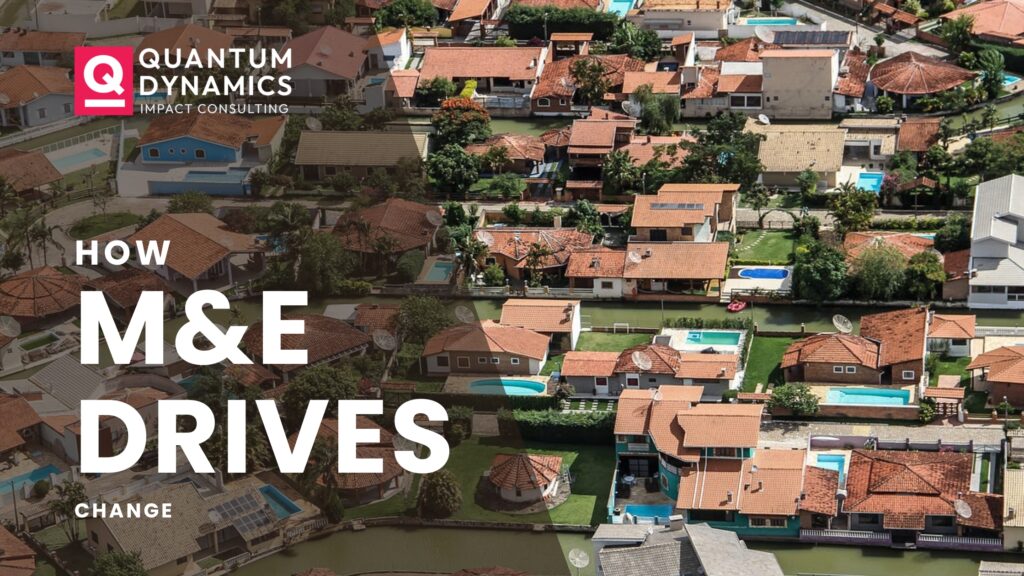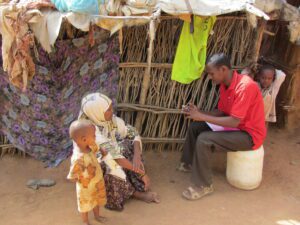Introduction
Resource allocation is a critical issue facing many organizations and projects, especially in sectors like health, education, and social development. In a context where resources are limited, such as in Uganda, the real challenge is not only the scarcity of funds but also how effectively they are allocated. Inefficiencies in allocation can lead to underfunded critical areas and a failure to achieve impactful results. This is where monitoring and evaluation in Uganda (M&E) plays a transformative role, helping organizations identify where resources are best deployed for maximum impact.
In Uganda, monitoring and evaluation provide insights into project performance and resource use, allowing organizations to make data-driven adjustments. Through M&E, decision-makers can pinpoint underutilized or misallocated resources, aligning investments with areas of high need. This article explores the importance of monitoring and evaluation in Uganda as a solution to inefficient resource allocation and explains how M&E practices can optimize resources to maximize project outcomes.
Understanding the Problem of Inefficient Resource Allocation
Why Inefficient Resource Allocation Is a Hidden but Costly Problem
In Uganda, resources for development projects are often limited and allocated based on estimates or assumptions rather than measurable data. Inefficient allocation results in funds being channeled toward low-impact activities while high-priority areas remain underserved. This misallocation has real consequences: communities may experience inadequate healthcare services, poorly resourced schools, and limited support for social initiatives. When resources are not properly aligned with project goals, the overall impact is diminished, regardless of the total funds available.
Effective monitoring and evaluation in Uganda can address these issues, providing a structured approach to track resource allocation and assess impact. By monitoring real-time data, organizations gain visibility into where resources are generating results and where adjustments are needed. Without M&E, decision-makers may continue funding activities that yield minimal impact, resulting in a waste of precious resources and lost opportunities for sustainable development.
Examples of Inefficient Resource Allocation in Uganda
- Healthcare Programs Lacking Comprehensive Coverage: Many healthcare projects focus heavily on infrastructure—building new clinics or hospitals—but lack sufficient resources for staff training, equipment, and patient care. In Uganda, clinics may remain underutilized or fail to provide essential services due to these gaps. Monitoring and evaluation in Uganda helps pinpoint these issues, ensuring resources are allocated to areas like staff development, which can amplify the impact of infrastructure investments.
- Education Initiatives Focused on Quantity over Quality: Educational projects in Uganda often aim to increase enrollment numbers and construct new classrooms, but without adequately addressing teacher training or curriculum development, these efforts fall short. Monitoring and evaluation in Uganda can reveal these inefficiencies, helping organizations to reallocate resources towards improving teaching quality, thus creating a stronger, more sustainable educational impact.
- Underutilized Social Development Resources: Social initiatives aimed at economic empowerment or community welfare frequently overlook community-specific needs, investing in projects that don’t resonate locally. This results in minimal engagement and low impact. Implementing monitoring and evaluation in Uganda can help ensure that resources align with community needs by integrating local feedback and adjusting project objectives.
The Ripple Effects of Ignoring Inefficient Resource Allocation
Loss of Trust and Support from Stakeholders
Stakeholders, including donors and community members, expect transparency and measurable outcomes. When organizations fail to allocate resources effectively, trust begins to erode. Donors, in particular, are more likely to fund projects with strong monitoring and evaluation in Uganda frameworks in place, as these systems assure them that their contributions are making a difference. Organizations that lack effective M&E risk losing donor support, jeopardizing future funding and the continuity of their projects.
Missed Development Goals and Stagnation
Without efficient resource allocation, projects struggle to achieve their intended impact, leading to unfulfilled development goals. For instance, a healthcare program may aim to improve maternal health outcomes but fail due to poor resource distribution. Over time, the cumulative effect of these inefficiencies slows down progress in sectors vital for Uganda’s development. Monitoring and evaluation in Uganda can prevent these issues, enabling projects to identify and reallocate resources to high-impact areas and accelerate progress.
Limited Competitive Advantage and Growth
In the development sector, projects often compete for limited resources, making effective M&E a critical differentiator. Organizations that consistently deliver results through monitoring and evaluation in Uganda build a reputation for efficiency and impact. Those that ignore M&E and fail to allocate resources strategically risk falling behind, limiting their growth potential and reducing their ability to scale successful programs.
Challenges in Sustaining Projects Long-Term
Inefficient resource allocation undermines the sustainability of projects, as funds may be exhausted prematurely or spent on low-priority activities. For example, a program that initially shows promising results might falter if resources are not managed carefully. Effective monitoring and evaluation in Uganda provide the insight needed to maintain a project’s momentum and sustainability, ensuring resources support long-term impact rather than short-term results.
Solution Through Monitoring and Evaluation in Uganda
The Role of Monitoring and Evaluation in Optimizing Resource Allocation
Monitoring and evaluation in Uganda offer a structured approach to identify which areas require more or fewer resources. M&E provides organizations with data-driven insights into the allocation process, helping leaders make informed, adaptive decisions. By regularly evaluating project outcomes, M&E highlights areas with high impact potential, ensuring that funds and resources go to initiatives that benefit the community most.
- Data-Driven Decision-Making: M&E systems deliver objective, actionable data on resource usage and project performance. This enables organizations to understand which areas are most effective and adjust allocations to optimize outcomes. With monitoring and evaluation in Uganda, decision-makers can identify and support high-impact activities.
- Increased Accountability to Stakeholders: Accountability is crucial in maintaining stakeholder trust. Monitoring and evaluation in Uganda provide transparency into resource use, allowing donors to see the direct results of their investments. This builds confidence and secures ongoing support, essential in resource-limited environments.
- Flexibility to Adapt to Changing Needs: The needs of communities can shift due to economic, social, or environmental factors. M&E allows for real-time adjustments to resource allocations, helping projects remain responsive and relevant. For example, if an education program detects higher dropout rates, monitoring and evaluation in Uganda can enable a quick response, redirecting resources to address the root causes.
Implementing Effective M&E Frameworks in Uganda
- Setting Clear, Measurable Objectives: Clear goals are foundational for effective M&E. By setting specific, measurable outcomes, organizations can gauge the effectiveness of their resource allocations. This clarity aids in determining whether resources are genuinely moving the needle on critical issues in Uganda.
- Engaging Local Communities in the M&E Process: Community involvement enhances M&E practices, ensuring that projects align with local needs. In Uganda, monitoring and evaluation systems that gather feedback from beneficiaries create a loop of continuous improvement, refining resource allocation based on genuine, on-the-ground insights.
- Leveraging Technology for Efficiency: Digital tools enable efficient data collection and analysis, streamlining M&E efforts. Mobile platforms, for instance, can facilitate data gathering in rural Uganda, enhancing the timeliness and accuracy of insights. Monitoring and evaluation in Uganda increasingly incorporate technology to track progress, allowing for prompt adjustments to ensure resource optimization.
Building a Culture of Continuous Improvement Through M&E
Organizations that prioritize monitoring and evaluation in Uganda foster a culture of continuous learning and improvement. This not only maximizes the impact of current projects but also strengthens future initiatives. M&E encourages organizations to reflect on successes and setbacks, ultimately making resource allocation more efficient and impactful over time.
Conclusion
Resource allocation in Uganda requires more than just budgeting; it demands a strategy grounded in data and responsiveness to community needs. The challenge of inefficient resource allocation can hinder meaningful progress, but it is not insurmountable. Monitoring and evaluation in Uganda provide organizations with the insights needed to allocate resources effectively, optimizing impact and improving project outcomes.
In a landscape where demands far outweigh available resources, monitoring and evaluation in Uganda is not just a best practice—it’s essential for sustainable impact. By investing in M&E, organizations ensure that every dollar, hour, and resource contributes to meaningful change, building a brighter, more resilient future for Uganda.
FAQs
- What is the importance of monitoring and evaluation in Uganda?
Monitoring and evaluation in Uganda enable organizations to track the effectiveness of their resource allocation, identify high-impact areas, and make data-driven adjustments, ensuring resources are used optimally. - How does M&E improve project sustainability in Uganda?
By assessing project impact continuously, M&E allows for timely reallocations, helping projects adapt to changing needs. This responsiveness enhances long-term sustainability. - What challenges do organizations face in implementing M&E in Uganda?
Limited funding, lack of skilled personnel, and logistical constraints can hinder M&E efforts. However, digital tools and community partnerships are increasingly helping overcome these challenges. - Why is stakeholder accountability important in M&E?
Stakeholders, particularly donors, need assurance that their investments are making a difference. Monitoring and evaluation in Uganda provide transparency, building trust and ensuring ongoing support. - How does technology support M&E efforts in Uganda?
Mobile data collection and digital reporting platforms make it easier to track project metrics in real-time, enhancing the speed and accuracy of monitoring and evaluation in Uganda. For further insights, explore best practices on M&E frameworks and community-led M&E.






